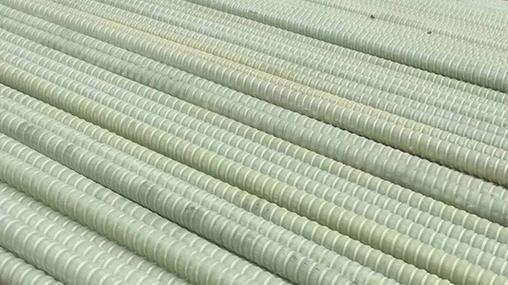- August 7, 2024
- Posted by: wellcoindustries
- Category: Rebar
Introduction
The construction industry is continually evolving, with materials and techniques advancing to meet modern-day challenges. One such innovation that is gaining traction is fiberglass rebar detailing. Unlike traditional steel rebar, fiberglass rebar offers unique benefits that make it an excellent choice for various construction projects. This comprehensive guide will delve into what fiberglass rebar is, its benefits, and how it compares to steel rebar. We’ll also explore the detailing and installation process, ensuring that you have a complete understanding of why fiberglass rebar might be the best choice for your next construction project.

What is Fiberglass Rebar?
Fiberglass rebar, also known as GFRP (Glass Fiber Reinforced Polymer) rebar, is a type of reinforcement bar made from glass fibers embedded in a resin matrix. This innovative material is used as an alternative to steel rebar in construction due to its numerous advantages. Unlike steel, fiberglass rebar is non-corrosive, making it ideal for structures exposed to harsh environmental conditions. As the construction industry shifts towards more sustainable and durable materials, fiberglass rebar is becoming a preferred choice for many engineers and builders.
Benefits of Fiberglass Rebar
Fiberglass rebar offers several distinct advantages over traditional steel rebar:
- Corrosion Resistance: One of the most significant benefits of fiberglass rebar is its resistance to corrosion. Unlike steel, which can rust over time when exposed to moisture and chemicals, fiberglass rebar remains unaffected, leading to longer-lasting structures.
- Lightweight Nature: Fiberglass rebar is significantly lighter than steel, making it easier to handle and transport. This can reduce labor costs and improve overall efficiency on construction sites.
- High Tensile Strength: Despite its lightweight nature, fiberglass rebar has a high tensile strength, making it suitable for a variety of structural applications.
- Non-Conductive Properties: Fiberglass rebar is non-conductive, which is particularly beneficial in projects where electromagnetic interference needs to be minimized, such as in hospitals or power plants.
Fiberglass Rebar Detailing and Installation
The process of detailing and installing fiberglass rebar is similar to that of steel, with some important differences to consider:
- Preparation: Before installation, ensure that the rebar is properly cut and bent to fit the specific requirements of the project. Unlike steel, fiberglass rebar requires specialized tools for cutting and bending due to its unique properties.
- Placement: Fiberglass rebar should be carefully positioned according to the structural design. It’s crucial to follow the manufacturer’s guidelines for spacing and placement to ensure optimal performance.
- Fastening: Secure the rebar using plastic or fiberglass ties, as metal ties can compromise the non-corrosive and non-conductive properties of the material.
During the installation process, it is essential to avoid any unnecessary stress or strain on the fiberglass rebar, as this can cause damage or reduce its effectiveness. Proper handling and installation techniques are key to maximizing the benefits of this material.
Fiberglass Rebar vs. Steel Rebar
When comparing fiberglass rebar to steel rebar, several factors come into play:
- Strength and Durability: Both materials offer high strength, but fiberglass rebar has the advantage of being non-corrosive, leading to greater longevity in harsh environments.
- Cost: While fiberglass rebar may have a higher upfront cost compared to steel, its durability and low maintenance needs can result in cost savings over time.
- Application: Fiberglass rebar is ideal for projects where weight, corrosion resistance, and non-conductivity are critical, whereas steel rebar is often used in traditional construction due to its widespread availability and familiarity.
Applications of Fiberglass Rebar in Construction
Fiberglass rebar is used in a variety of construction projects, including:
- Bridges and Coastal Structures: Due to its resistance to saltwater and corrosion, fiberglass rebar is commonly used in bridges, piers, and other coastal structures.
- Tunnels and Underground Structures: The non-conductive nature of fiberglass rebar makes it ideal for use in tunnels and other underground structures where electromagnetic interference needs to be minimized.
- Parking Structures: Fiberglass rebar is often used in parking garages due to its lightweight nature and resistance to the harsh chemicals found in de-icing salts.
Conclusion
Fiberglass rebar is a versatile and durable alternative to traditional steel rebar, offering numerous benefits that make it suitable for a wide range of construction projects. From its corrosion resistance to its lightweight nature and high tensile strength, fiberglass rebar provides a reliable solution for modern construction challenges. As the construction industry continues to evolve, incorporating innovative materials like fiberglass rebar will be key to building long-lasting, sustainable structures. If you’re planning a new construction project, consider the advantages of fiberglass rebar to ensure the longevity and resilience of your structure.
